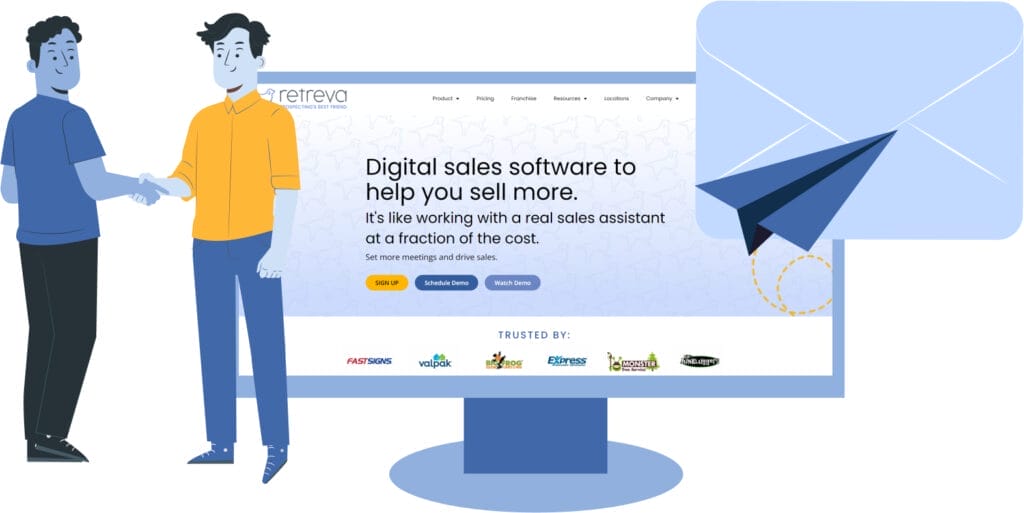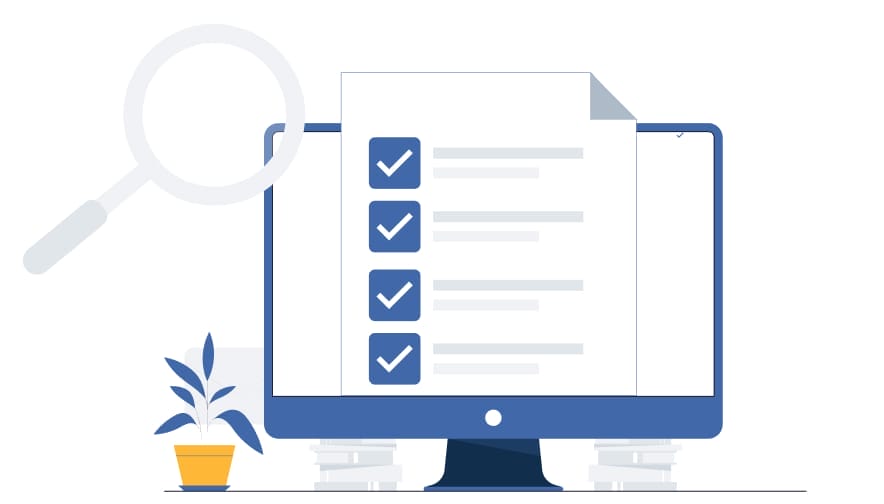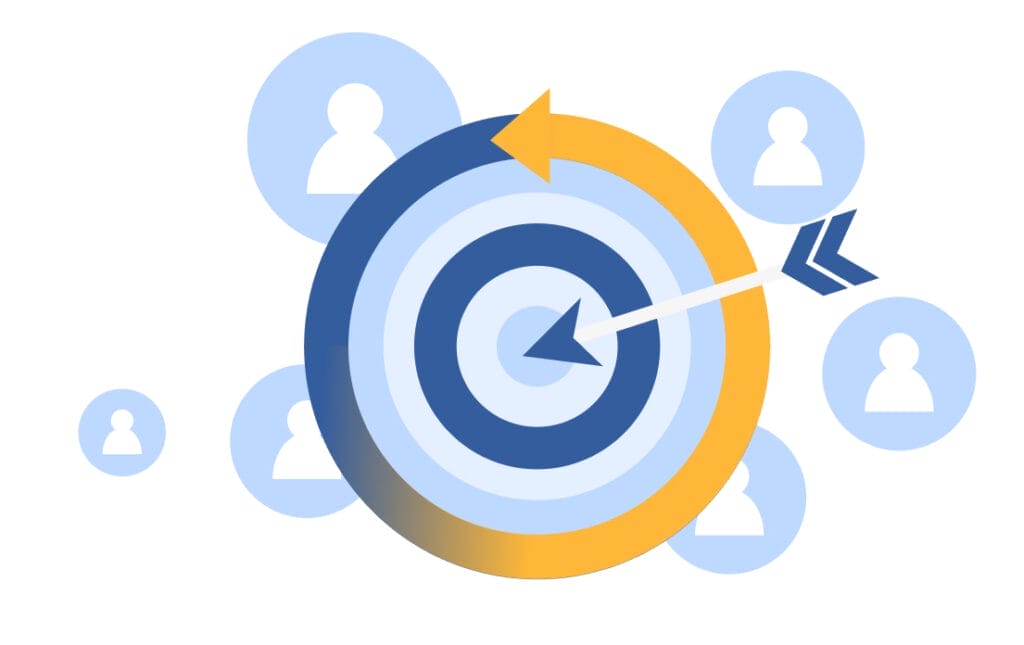Cold calling, while once a staple in B2B prospecting, has become less effective. To connect with prospects in a more engaging and productive manner, businesses must explore alternative strategies that resonate with their target audience. You can use these ten powerful alternatives to cold calling that can help you generate leads and build stronger relationships with potential clients.

Email Outreach Campaigns
Email outreach has become one of the best alternatives to cold calling in B2B prospecting. By crafting personalized and targeted emails, you can reach your prospects directly in their inbox and offer them solutions to their specific pain points. Unlike cold calls, which can feel intrusive, email outreach allows prospects to engage at their own pace leading to more thoughtful and meaningful conversations.
To get the most out of your email campaigns, you need to implement strategies like segmentation, personalization, and follow-up. Segmentation allows you to group your prospects based on criteria like industry, company size, or behavior, so each email speaks directly to the recipient. Personalization goes beyond just addressing the recipient by name, it’s about customizing the content to the prospect’s specific challenges and interests. And a well-planned follow-up sequence is key to maintaining momentum and keeping your brand top of mind, not every prospect will respond to the first email.
Cold emails typically get higher engagement rates than cold calls, as recipients are likelier to open and respond to messages that speak to their needs. Email campaigns are also highly scalable so you can reach a big audience with relatively little effort. The measurable nature of email marketing means you can track open rates, click-through rates, and conversions to optimize your strategy for even better results.
Related Article: Avoid These 5 Sales Prospecting Mistakes That Could Be Costing You Leads

Social Selling
Social selling is a game changer in B2B prospecting, especially on LinkedIn. By using social media you can connect with prospects in a more organic and non-intrusive way than cold outreach. Social selling is about using your social presence to build relationships, engage with potential clients, and subtly guide them through the buyer’s journey. This opens up new connections and allows you to understand a prospect’s needs and challenges before you even start a sales conversation.
For social selling, you need to focus on building a strong personal brand, participating in relevant conversations and sharing valuable content. A well crafted personal brand on LinkedIn for example makes you look like an authority in your space and more approachable to prospects. Participating in your industry groups or commenting on influential posts keeps you visible and relevant and shows your expertise. Sharing content that’s insightful and relevant to your target audience will attract new leads and nurture existing connections by giving them ongoing value.
The benefits of social selling are many. It builds trust with prospects as they can see your expertise and authenticity over time, not cold outreach. It also expands your reach and allows you to connect with decision-makers who would be hard to reach through traditional methods. Social selling gives you context for your outreach as you can tailor your messages based on the conversations and insights you get from social media engagement and have more meaningful and productive conversations.

Content Marketing
Content marketing is a way to attract and nurture B2B leads by providing valuable and relevant content that answers the prospect’s questions. Instead of reaching out cold, this approach pulls the prospect in and positions your company as an expert in the industry.
Good content types are blogs, whitepapers, case studies, and webinars. Blogs are quick hits on common industry problems, whitepapers are in-depth research and analysis, case studies are real-life examples, and webinars are interactive with potential leads.
Content marketing allows you to be seen as a thought leader, generate inbound leads and nurture over time. It attracts qualified prospects and guides them through the buying journey so they convert.
Referrals and Networking
Referrals and networking are the most powerful B2B prospecting strategies, using the trust and connections you already have. Getting referrals from existing clients or tapping into your professional network can get you warmer leads, as these prospects come with trust and credibility already established. Networking online and offline opens up new opportunities and partnerships that aren’t available through traditional outreach.
Consider creating a structured referral program that incentivizes clients to refer your services. Attend industry events and conferences regularly to expand your network and make connections. Join relevant online communities like LinkedIn groups or industry-specific forums to engage with potential leads in a more casual relationship-building environment.
Referral leads are warmer and convert higher. This approach also builds stronger relationships, as prospects are more likely to trust and engage with a business recommended by a peer or industry connection. Referrals and networking can turbo-charge your prospecting by leveraging the trust and credibility you already have.
Account-Based Marketing (ABM)
Account-Based Marketing (ABM) is a highly targeted and strategic approach to B2B prospecting that focuses on engaging specific high-value accounts rather than casting a wide net. By concentrating resources on a select group of key accounts, businesses can tailor their marketing efforts to the unique needs and challenges of each prospect, resulting in more meaningful and impactful engagements.
The process of ABM begins with identifying key accounts that are most likely to benefit from your products or services. Once these accounts are identified, the next step is to create personalized campaigns that address the specific pain points and goals of each account. This involves close collaboration between sales and marketing teams to ensure a unified and consistent approach. By aligning these efforts, companies can deliver highly relevant content and messaging that resonates with the decision-makers at each target account.
Because ABM focuses on high-value prospects, ABM typically results in a higher return on investment (ROI) compared to broader marketing efforts. According to Powered by Search, companies that have used account-based marketing have seen at least 77% growth in revenue. The personalized nature of ABM also leads to deeper and more meaningful engagements, as prospects are more likely to respond positively to content that speaks directly to their needs. Ultimately, ABM allows businesses to build stronger relationships with key accounts and achieve more effective and efficient prospecting results.

Inbound Marketing
Inbound marketing is about attracting leads by giving them valuable content and experiences that meet their needs, not interrupting them with cold outreach. Instead of pushing your message onto prospects, inbound marketing pulls them in by addressing their challenges and offering solutions, and they’ll engage with your brand on their terms.
The key to inbound marketing is SEO, content, and lead magnets. SEO ensures that prospects searching for information about your offerings find your content. High-quality content like blogs, videos, and eBooks provides the answers and insights prospects are looking for. Lead magnets like downloadable resources or free trials offer extra value in exchange for contact information so you can capture and nurture leads over time.
Inbound marketing attracts prospects who are already interested in what you offer, so more qualified leads and higher conversion rates. Inbound marketing also builds long-term relationships by providing value continuously, keeping your brand top of mind as prospects move through the buyer’s journey.
Event Marketing
Event marketing is a great way to generate B2B leads, using webinars, conferences and virtual expos to connect with prospects. These events allow you to showcase your expertise, demonstrate your products or services and connect with your target audience in real-time. Unlike other marketing strategies, event marketing allows for direct interaction and immediate feedback from attendees.
To get the most out of event marketing, you need to target events relevant to your industry and audience. Engage with attendees during the event through live Q&As, interactive presentations, or one-on-one networking. Follow up with personalized outreach after the event to keep the conversation going, nurture the relationships you started, and turn attendees into leads.
With event marketing, you can interact with prospects directly, answer their questions and concerns on the spot, and get higher engagement and trust. The feedback you get during the event helps you refine your message and approach in real time. And because events are focused, you get higher engagement than other marketing tactics, so event marketing is a powerful part of your B2B prospecting.

Partnering with Influencers
Partnering with industry influencers is a powerful strategy to enhance your credibility and expand your reach in B2B prospecting. Collaborating with influencers who have established authority and a loyal following in your industry allows you to tap into their credibility, making your brand more trustworthy in the eyes of potential prospects. This approach can amplify your message and introduce your products or services to new audiences that may not have been reached through traditional marketing channels.
To effectively partner with influencers, start by identifying those who align with your brand values and have a strong influence over your target audience. Once you’ve found the right influencers, focus on establishing mutually beneficial partnerships where both parties see value. Co-creating content, such as guest blog posts, webinars, or social media campaigns, allows you to leverage the influencer’s voice while delivering valuable insights to their audience.
Partnering with influencers helps expand your reach by exposing your brand to the influencer’s audience, which can lead to increased visibility and engagement. Additionally, the trust that influencers have built with their followers can enhance your brand’s credibility, making prospects more likely to engage with your offerings. Ultimately, influencer partnerships provide access to new audiences and can be a highly effective way to boost your B2B prospecting efforts.

Utilizing Video Outreach
Using video in B2B prospecting has become a great way to get attention and connect with prospects on a more human level. Personalized video messages allow you to connect with your audience in a dynamic and visual way, making your outreach more memorable. Unlike text-based communication, video can convey tone, emotion, and personality and build rapport and trust faster.
To do video outreach use platforms that allow you to create and share short, personalized videos to each prospect. Focus on delivering value in each video – whether it’s a pain point, a solution, or just an introduction to your services. The key is to keep the videos short, relevant, and directly aligned to the prospect’s needs so your message lands and prompts action.
The benefits are big. Video is more engaging than text, so your message will stand out in a busy inbox. It adds a human touch often missing from traditional outreach, and prospects will respond more positively. By using video in your prospecting, you can build stronger connections, differentiate yourself, and win more.

Retargeting Campaigns
Retargeting is a powerful B2B prospecting strategy that involves re-engaging people who have already interacted with your brand. It involves showing targeted ads to website visitors or previous leads who didn’t convert on their first visit. By keeping your brand in front of these prospects as they continue to browse online, you increase the chances of getting them back to your site and further down the funnel.
To run successful retargeting campaigns, use retargeting ads designed to re-engage website visitors or leads who have shown interest but haven’t converted yet. These ads can be tailored to the prospect’s previous interaction, the pages they visited, or the content they downloaded. By delivering relevant and timely messages, you can remind prospects of the value your products or services offer and get them to come back and convert.
Retargeting campaigns have many benefits. They keep your brand in front of prospects who may need more touchpoints before they make a decision, increasing your chances of conversion. Retargeting also works well with other prospecting strategies, giving you a consistent and persistent presence across all your marketing efforts. And retargeting maximizes the value of your initial outreach by keeping interested prospects engaged until they are ready to convert.
Modern B2B Prospecting
In today’s B2B world cold calling alone just isn’t enough to get the best results. Try these ten instead, from personalized email outreach to influencer partnerships, and connect with prospects more meaningfully. These will help you engage and convert more leads and build stronger relationships with your target audience.
Get ahead of the curve and get better business outcomes by using these in your prospecting.


